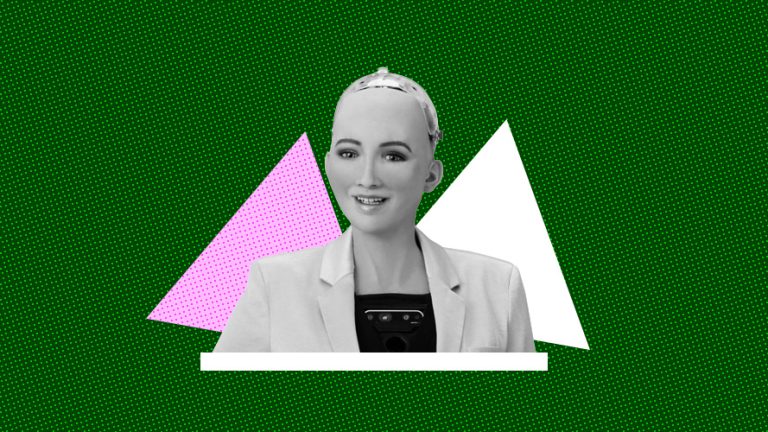AI robot Sophia, the first female humanoid robot made by Hanson Robotics.
Artificial intelligence (AI) has grown in popularity and importance over the past few years. Sophia, a humanoid robot made by Hanson Robotics, is one of the most well-known AI robots. Since her debut in 2016, the female robot Sophia has made some appearances on various media platforms, drawing both praise and criticism. In this article, we’ll talk about the AI robot Sophia’s background, describe her characteristics, and look at the arguments for and against her creation.
David Hanson, the creator of the lifelike robot business Hanson Robotics with headquarters in Hong Kong, is the man behind Sophia. Hanson claims that his wife and Audrey Hepburn were the sources of inspiration for Sophia’s design. The goal of Sophia’s designers was to make her as resembling a human being as possible, with the capacity to interact and communicate with others through facial expressions and natural language.
Sophia’s face is comprised of “frubber,” a proprietary substance that combines flesh-like silicone and rubber. She can create eye contact and imitate human facial expressions because of this. She also has a collection of sensors, cameras, and microphones that enable her to detect her environment and identify faces.
Natural language processing is a feature of Sophia’s programming that enables her to comprehend and respond to spoken language. She can respond to inquiries on a variety of subjects and has access to a big reservoir of knowledge. Because Sophia can learn from her experiences with people, she may eventually respond in more complex ways.
In addition, Sophia has a distinct personality that comes through in her interactions and talks with others. Hanson Robotics claims that Sophia was modeled like her creator’s wife in terms of personality. Sophia is intended to have these qualities: empathy, compassion, curiosity, humor, and a love of the arts.
Sophia is still a computer, despite her sophisticated features and lifelike appearance, and some detractors have said that she is being utilized more as a marketing ploy than as a real advancement in artificial intelligence. It has been suggested that the development of robots that can replicate human behavior and emotions may have unintended consequences, including the dehumanization of humans and the normalization of the objectification of women.
Moreover, Sophia’s portrayal as a female robot has drawn criticism from some, who contend that doing so promotes gender stereotypes and objectifies women. In response to these concerns, Sophia’s inventors stated that they wanted to make a robot that was accessible and approachable and that choosing a female gender was a logical choice given the notion that women are more loving and empathic than men.
Although Sophia is the only female robot in the world, it is important to remember that there are others. The truth is that numerous more female robots, like Erica and Nadine, have been created by other businesses. The creation of female robots raises significant concerns regarding gender and technology, and these topics must be explored and debated.
Sophia has established herself as a cultural phenomenon despite the controversy surrounding her creation, appearing on talk shows, news programs, and at several conferences and events. She was even given citizenship in Saudi Arabia, making history as the first robot to hold that position. This choice generated debate, with opponents claiming that it was a publicity ploy that exposed the nation’s disregard for human rights.
In conclusion, Sophia is a remarkable technological achievement that has attracted the interest of the entire globe. Her realistic features have drawn praise and criticism; some regard her as a potential step towards a more developed and compassionate future, while others see her as a threat to human ideals and dignity. Whatever one’s opinion of Sophia and her implications, there is no doubt that she has started a new chapter in the continuing debate about the ethical implications of building computers that mimic human behavior and the place of AI in society.






Add comment